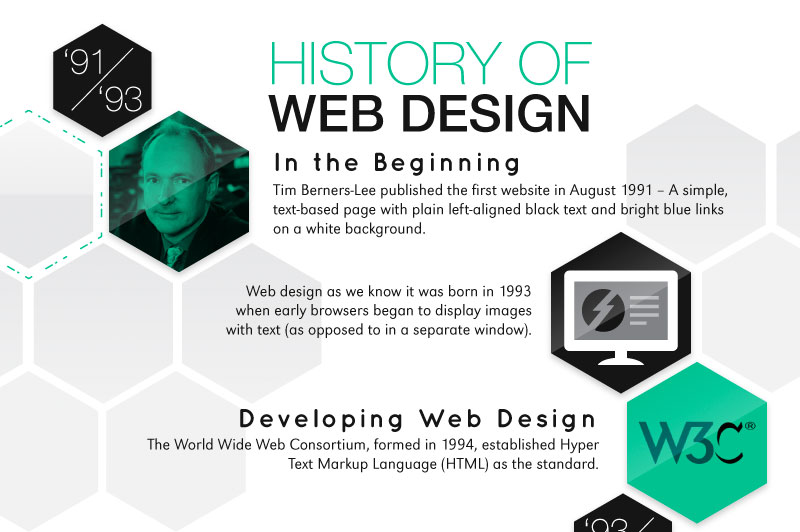Crafting A User-Friendly Web Site: Techniques And Methods For Web Design Success
Crafting A User-Friendly Web Site: Techniques And Methods For Web Design Success
Blog Article
Content By-Todd Geertsen
Master the art of website design by focusing on customer experience. Craft intuitive navigation and select mobile optimization to improve the searching experience. Guarantee very easy navigating with clear headings and enticing visuals. Prioritize mobile responsiveness for a constant individual experience. By incorporating these essential style concepts, you can produce a straightforward website that astounds visitors.
Necessary Style Principles
When making an internet site, focus on user experience above all else. Your major objective must be to create a smooth and satisfying experience for your site visitors. Beginning by making sure that your site is simple to navigate. Usage clear headings, arranged menus, and instinctive buttons to guide individuals through your content easily. Keep in mind, simpleness is essential. Prevent littering your web pages with unneeded elements that can bewilder or puzzle your target market.
One more essential layout concept is to make sure your web site is aesthetically attractive. Select a natural color design, high-quality images, and understandable typefaces to improve the general look of your website. Uniformity is vital in establishing a strong brand identification and making your internet site much more remarkable to users.
Additionally, prioritize mobile responsiveness. With updated blog post searching the internet on their smartphones and tablets, it's vital that your web site looks and operates well on all devices. Examine your site on different display sizes to guarantee a seamless experience for all individuals. By concentrating on these vital layout principles, you can produce an user-friendly internet site that maintains visitors coming back for even more.
User-Focused Navigating
To enhance individual interaction and enhance their surfing experience, focus on developing intuitive navigation paths that assist site visitors flawlessly through your website. Clear and efficient navigation is essential for assisting users discover the information they need rapidly and effectively. Begin by maintaining click here for info and understandable. Usage detailed labels that plainly show what content can be found under each menu choice. Furthermore, think about implementing dropdown menus for subcategories to prevent overcrowding the main navigation bar.
An additional crucial element of user-focused navigation is the use of breadcrumbs. Breadcrumbs are a second navigating aid that reveals customers their current area on the website and permits them to conveniently browse back to previous pages. This attribute is particularly valuable for individuals who enter your site via a deep link or an online search engine outcome.
In addition, integrating search capability prominently on your internet site can even more boost customer navigating. A search bar enables users to swiftly locate details web content without needing to click with several web pages. Ensure that your search bar is quickly visible and obtainable on every web page of your website for maximum use. By prioritizing user-focused navigating strategies, you can create an extra instinctive and satisfying searching experience for your visitors.
Mobile Optimization Techniques
Consider maximizing your website for mobile phones to make sure a seamless user experience across different screen sizes. Mobile optimization is critical in today's digital landscape where a considerable part of net surfing takes place on mobile phones and tablet computers.
To improve mobile functionality, begin by carrying out responsive style techniques. This technique enables your web site to adjust to numerous display measurements, keeping capability and looks.
Concentrate on enhancing packing times for mobile customers. Slow-loading internet sites can prevent site visitors and impact your search engine rankings. Press images, decrease HTTP requests, and leverage browser caching to improve packing speed. Additionally, focus on material hierarchy for mobile display screens. Make sure that important information is prominently shown, and navigation is instinctive, advertising easy access to key areas.
Make use of touch-friendly elements such as bigger switches and streamlined types to promote communication on smart phones. Conduct extensive screening across different mobile systems to determine and fix any type of use concerns.
Conclusion
In conclusion, grasping the art of website design is vital for developing an user-friendly website. By including essential layout concepts, user-focused navigating, and mobile optimization strategies, you can ensure a smooth and satisfying experience for your visitors.
For example, a regional bakeshop saw a 30% increase in online orders after overhauling their site to be a lot more straightforward and mobile-responsive. Keep in mind, a properly designed website can make all the distinction in drawing in and retaining clients.
